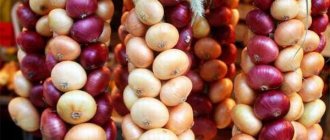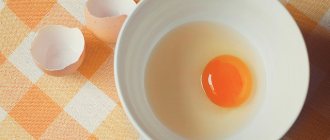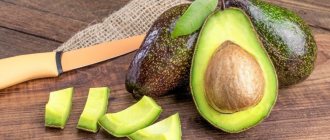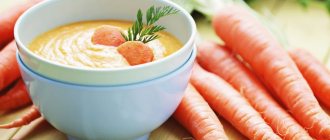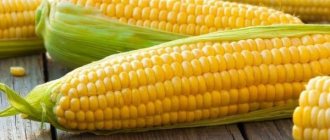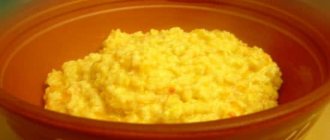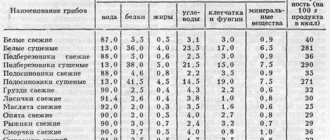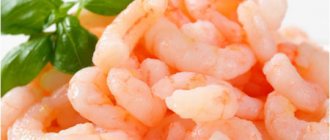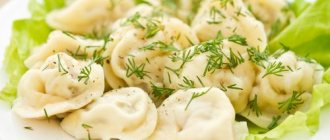Carrots are rich in vitamins, microelements, and fiber. But, with pancreatitis, carrots in their raw form create additional stress on the pancreas.
Is it possible to eat raw fresh carrots for pancreatitis? In particular, is it possible to use carrot juice or grated carrots for inflammation of the pancreas? Can I have boiled carrots? Why does eating fresh carrots put stress on an inflamed pancreas? This is what this article is about.
General principles of diet for pancreatitis
Organizing proper nutrition for a problem pancreas consists of simple rules:
- Food is processed mechanically. All solid products are well boiled, crushed, and pureed.
- Food is prepared only by boiling, steaming or in a slow cooker. It is unacceptable to fry, smoke, dry, pickle, or preserve anything.
- Overeating is prohibited. The stomach is loaded in small portions, but regularly. The ideal diet plan is to eat every 3-4 hours, and 2 hours before bedtime, allow yourself only a glass of water or herbal infusion.
- All products must be fresh. Vegetables and fruits are ripe. Meat – not defrosted. Milk - not the last day in the specified production period.
- Food is taken at the optimal temperature – no more than 50°C, but not less than 20°C. You should not eat hot or cold food directly.
You will have to resolutely give up bad habits. We are not talking only about nicotine or alcoholic beverages (they are out of the question in case of pancreatic diseases). You need to reconsider your tendency to have chaotic snacks - on the run, dry food or at night.
Possible harm and contraindications
Carrots are contraindicated for kidney and liver diseases, large stones in the urinary system, gastrointestinal pathologies in the acute stage, allergies.
A raw food diet creates an unusual load on the organs of the gastrointestinal tract, especially if there are chronic diseases. In people with allergies, the vegetable causes a skin rash, peeling, and itching.
Excess beta-carotene provokes exacerbation of symptoms of pancreatitis and cholelithiasis, vomiting and nausea, drowsiness, lethargy, and headache.
What not to eat with pancreatitis: prohibited foods
Some products may have a double "reputation". For example, low-fat cottage cheese or 1% kefir are seemingly ideal dietary foods. But with gastritis with high acidity, milk can cause harm. Whether or not one product can be used often depends on the period of the disease (remission, attack, chronic course) or concomitant diseases.
However, there is a list of foods and dishes that are strictly forbidden to eat for any form of pancreatitis:
- All fresh baked goods, all types of pies, cakes, buns.
- Chocolate products, caramel, condensed milk, ice cream, nuts, figs, dried apricots.
- All legumes.
- Types of fatty, rich first courses are excluded - borscht, rassolnik, mushroom soup. Cold dishes such as beetroot soup or okroshka are also prohibited.
- You need to forget about fatty fish, poultry and meat - especially pork and lamb. All smoked sausages, canned food, and dried fish are excluded.
- If you have pancreatitis, do not eat fried or hard-boiled eggs.
- Sour cream, yoghurt, margarine, fatty milk, cottage cheese and butter are excluded from dairy products.
- Porridge is not cooked from pearl barley and millet.
- As for vegetables, they forget about radishes, cabbage, peppers, spinach, onions and garlic.
Naturally, any fast food and spicy food is prohibited. Taboos are imposed on coffee, soda, grape and grapefruit juices.
What can you eat with pancreatitis: list of products
Despite the impressive list of prohibited foods, there is still a lot of room for good nutrition even with pancreatitis.
| Flour products | Yesterday's bread (preference – whole grain, rye, wheat), homemade crackers, dryers, biscuits, crispbread. During periods of remission - noodles and spaghetti (up to 170 grams per serving). |
| Cereals | Rice, buckwheat, oatmeal, semolina. |
| Types of vegetables and herbs | Vegetables include potatoes, pumpkin, beets, carrots, eggplants, and zucchini. You can add 1 tbsp daily. l. chopped celery, parsley and dill. |
| Fish dishes | You can eat the pulp of varieties with the lowest fat content (hake, cod, pike perch), boiled or cooked in a slow cooker. Fish meatballs and broths. |
| Seafood | Sea kale. |
| Meat menu | For preparing broths, steamed cutlets and meatballs, preference is given to chicken, rabbit, turkey, and lean veal. |
| Fermented milk | Kefir, low-fat cottage cheese, cheese are not prohibited with normal or low stomach acidity. |
| Eggs | Steamed omelette made from chicken and quail eggs. |
| Oil | Refined sunflower, olive, flaxseed, pumpkin. In stable remission - creamy (no more than 30 grams per day). |
| Fruits | Bananas, baked apples. |
| Bee products | Honey, propolis, royal jelly. |
| Spices | Sesame, fennel, cumin, turmeric, cloves. |
What vegetables can you eat?
You don’t have to be afraid to eat potatoes, carrots, and beets. Zucchini and pumpkin are also considered light vegetables for pancreatitis and gastritis. If the acidity of the stomach is not increased, cauliflower is allowed.
You will definitely have to give up the following vegetables and types of greens:
- pepper (bell pepper, salad, hot);
- daikon and radish;
- garlic and onions (onions and greens);
- sorrel and lettuce;
- rhubarb and horseradish.
During periods of remission, with great caution, allow yourself small portions of tomatoes and cucumbers. Naturally, you need to be sure that the vegetables are not full of nitrates and have not been stored in warehouses for a long time. It is best to buy vegetables from village markets during the appropriate season.
What fruits or berries can you eat?
If you have pancreatic disease, you can eat:
- Non-sour apples and ripe pears. The best ones are baked and pureed. The skin and core are removed. Compotes made from dried fruits with sweeteners (sorbitol or xylitol) are good.
- Bananas. Already 5–7 days after the exacerbation.
Decoctions of dried rose hips and black currants are very healing.
Compotes, jelly or jelly are useful from fresh lingonberries, chokeberries, bird cherry and blueberries. The only contraindication for these berries is a tendency to constipation.
On days of stable remission, you can treat yourself to:
- ripe melon and avocado pulp;
- a slice of pineapple;
- several slices of tangerine (without film).
No grapefruit, pomelo, orange. These citrus fruits are highly acidic.
It is better to exclude grapes, plums and apricots completely.
Raspberries and strawberries are prohibited due to their hard seeds and increased sweetness. The same applies to fresh blackcurrants. These berries can be added outside of periods of exacerbation of pancreatitis.
What can you eat from meat?
The diet for pancreatitis and cholecystitis does not exclude poultry dishes - chicken, turkey, pheasant, duck. The meat is eaten well cooked and pureed. Before cooking, it is important to remove all membranes, visible fat, cartilage and tendons.
During the remission stage, the meat menu is varied with lean veal and rabbit. You can boil chicken gizzards and liver. But only when there are no dyspeptic symptoms, especially diarrhea.
The listed types of meat are used to make meatballs, steamed cutlets, and casseroles with semolina. Broths of the second boiling are used as a basis for vegetable puree soups.
If the recovery dynamics of the pancreas is positive, nutritionists allow supplementing the diet with boiled beef tongue, as well as doctor’s milk sausage (without spices or preservatives).
It goes without saying that meat cannot be fried, smoked, or marinated in onions or peppers.
What kind of fish can you
Of river and sea fish, the following varieties are allowed with a fat content of up to 4%:
- the lowest fat content (less than 1%) is found in river perch, saffron cod, cod, pollock, whiting;
- Fish with 2% fat content include roach, mullet, pike, flounder, lamprey and whitefish;
- no more than 4 percent fat is contained in sea bass, hake, rudd, herring and carp.
Fattier fish, such as catfish, carp, tuna, pink salmon, anchovy and capelin, are allowed only in the remission stage.
The fish must be fresh, stored on ice. Frostbite can be judged by a yellowish tint on the belly.
For dishes, fillet that has been removed from skin and bones is used. The first month after an acute attack, fish is administered in ground form. Steam cutlets are prepared from it and added to vegetable puddings.
Milk
If you have pancreatitis, it is strictly prohibited to consume condensed milk, yoghurt, ice cream, processed or smoked cheese.
It is not recommended to take homemade milk that has not undergone special processing and pasteurization.
When choosing a dairy product in a store, you need to carefully study the composition for the absence of additives. Be sure to pay attention to the date of manufacture and fat percentage.
Milk is introduced into the diet no earlier than the second week after an acute pancreatic attack. Start with 1% kefir. Then you are allowed to add 50 ml of 1.5% milk or 5-10 g of unsalted butter to the porridge.
Remission and the absence of gastritis with high acidity allow you to add low-fat varieties of hard cheeses and cottage cheese to the menu.
Cereals
Rice and buckwheat can be called the safest for the gastrointestinal tract. They are cooked in a steam bath or in a slow cooker. Rice or buckwheat flour is used as a component for fish cutlets, vegetable puree soups, and in the preparation of homemade bread.
Following rice and buckwheat, semolina is introduced into the diet. Porridge is boiled in water or used in curd and fruit puddings prepared in a slow cooker.
To diversify the remission menu, you can eat wheat and oatmeal porridge. To ensure complete boiling and easier digestion by the stomach, the cereals are pre-soaked for an hour or two.
In some cases, nutritionists allow these cereals soon after acute pancreatitis. The astringent, enveloping properties of oats restore the gastric mucosa well after relapses of gastritis, cholecystitis and other gastrointestinal diseases.
Sweets and pancreatitis
Natural sucrose is found in sufficient quantities in fruits and berries. Jelly, compotes, decoctions, puddings, and casseroles are made from the permitted ingredients.
Honey and bee products sweeten the lives of people suffering from pancreatitis. They not only provide a delicious variety of herbal infusions and breads, but also have a beneficial effect on the functioning of the gastrointestinal tract.
Dry bread or biscuits go well with tea or kefir. You need to choose them in the dietary departments of stores and check the composition on the packaging.
In the remission stage of pancreatitis, nutritionists allow meringue (protein soufflé). It is better to prepare it yourself by whipping the egg whites with a sweetener and drying them in the oven at low temperature.
Under no circumstances should condensed milk, ice cream, figs, chocolate or baked goods be consumed. High sugar and fat content will cause an acute attack of pancreatitis and complications.
Seasonings
Spices and herbs significantly improve the taste of dishes. The diet for pancreatitis does not prohibit the use of certain types of seasonings:
- cinnamon, turmeric and cloves;
- sesame and flax seeds;
- parsley and dill (dried or fresh);
- Provençal herbs and fennel.
Coriander, basil and mint are carefully introduced into the menu. After several months of successful treatment of pancreatitis, bay leaves are added to soups.
Horseradish, mustard, garlic, onions and vinegar are strictly prohibited at all stages of pancreatitis. You should absolutely not eat greens with a high level of acid - lettuce, sorrel, green onions and garlic, spinach.
Carrot recipes
Many people think that carrots are a rather boring vegetable, from which it is difficult to prepare a unique dish, especially when the choice is limited by the diet. But even in this case, you can use interesting recipes to diversify your menu.
Boiled carrot salad
Boil large carrots until soft. You can add a couple of cloves of garlic to the water. Cool the boiled vegetable and cut into cubes. Season with parsley and butter, salt and lemon juice. Eat chilled.
Boiled carrot salad with herbs
Cream soup
- We will need carrots, ginger, orange zest, onions, butter and salt.
- Cut the carrots and onions into cubes and simmer in water.
- Separately, cook the chicken broth and skim off the fat. Then add orange zest and a small piece of ginger to add a wonderful aroma to the soup. Boil them a little and remove.
- Add carrots and onions to the broth and cook until they become very soft.
- Transfer the vegetables to a blender, chop and add broth until the soup reaches the desired consistency.
- Add spices and salt to taste, a piece of butter and sprinkle with herbs.
Vegetable juices with carrots
- Peel two medium carrots, wash well, chop and pass through a juicer. You can add other vegetable juices to carrot juice in a 1 to 1 ratio.
- If you decide to drink carrot juice pure, add a little cream to it. This way the vitamins are better absorbed by the body.
From the stage of remission, fresh carrots should be introduced into the diet gradually and in small doses. The concentrate is beneficial for the immune system and the body as a whole.
Vegetable stew
Cut the carrots and onions into large pieces, chop the cabbage, you can add a little tomato or zucchini, sauté everything in a saucepan over water until tender. Add salt, pepper, garnish with herbs and you are ready to eat.
Vegetable stew with carrots is one of the basic dietary dishes for pancreatitis
Carrot puree turns out very tasty if you add a little apple to it. All ingredients must be simmered until tender, then chopped in a blender or using a grater.
Carrots for pancreatitis can be an excellent help in the fight against the disease. When creating a menu, be sure to consult with your doctor so that the prepared dishes are beneficial!
source
Diet for acute pancreatitis
The diet for acute inflammation of the pancreas involves a smooth transition from hunger to an expanded table No. 5:
- During the first day, nutrients enter the body exclusively through the parenteral route. If you manage to stop nausea and vomiting, give liquids at room temperature to drink - clean water, rosehip decoction, unsweetened tea - no more than 150 ml every 4 hours.
- On the 2nd–3rd day you can already take liquid, warm, homogeneous food - slimy porridge, puree soup, berry jelly with a sweetener. Meals during this period are small and frequent, every 3 hours.
- After about a week, the menu will be diversified with compote, fruit puree, broth soup with pureed vegetables, steamed omelet, 1% kefir, low-fat cottage cheese, baked apples, steamed meat and fish cutlets.
- A month after an acute attack, it is already safe to eat food without thoroughly rubbing it during preparation. Small pieces of fresh fruit, boiled fillets of meat, fish, poultry, and day-old bread are thoroughly chewed during the meal. Single servings are becoming larger, up to 600 g.
All new ingredients are introduced gradually, no more than one per day.
The need to follow a diet
A competent diet and patient discipline are the basis for successful treatment of pancreatitis. You will have to follow a strict diet for many months. But, if you are patient, this path provides a chance to restore full functioning of the pancreas and even cure pancreatitis forever.
Dietary nutrition is the main aspect in the complex therapy of pancreatitis. Without this, it is impossible to stop the intoxication of the body by pancreatic enzymes. A break in the functioning of the gastrointestinal tract and the subsequent gentle regime give time to stop pathological processes, prevent pancreatic juice from starting to digest the pancreas itself and lead to irreversible processes in the tissues.
Consequences of not following the diet
Pancreatitis easily develops into a stomach ulcer, as bleeding opens in the damaged mucosa. And due to the fact that the outflow of bile is impaired, the liver is affected and there is a risk of developing hepatitis.
Refusal to follow the diet is fraught with other serious complications with the development of concomitant diseases:
- duodenal obstruction;
- gastritis;
- cholecystitis;
- duodenitis;
- glb (cholelithiasis);
- thrombosis of the splenic veins;
- formation of cysts and malignant tumors.
In addition, a frequent companion to chronic pancreatitis is diabetes mellitus. The pancreas is responsible for producing enzymes for digesting food and insulin, which is necessary in the breakdown of sucrose. Only strict adherence to all the nutritionist’s instructions will stop pathological changes in pancreatic fermentation.
Beneficial properties of root vegetables
Carrots are one of the healthiest vegetables. It contains many substances necessary for the normal functioning of the human body:
- vitamins B, C, A, K, E,
- microelements (iron, potassium, iodine, calcium, magnesium),
- carbohydrates, proteins (in small quantities), no fats.
Regular consumption of dishes from this vegetable brings great benefits to the body due to the following effects:
- Normalization of the body's defenses.
- Antioxidant effect, removal of toxins, which ensures cancer prevention and rejuvenation of the body.
- Improving the motor function of the digestive tract, eliminating constipation due to the effects of fiber contained in carrots.
- Beneficial effect on the organ of vision and on epithelial tissues, including the skin.
